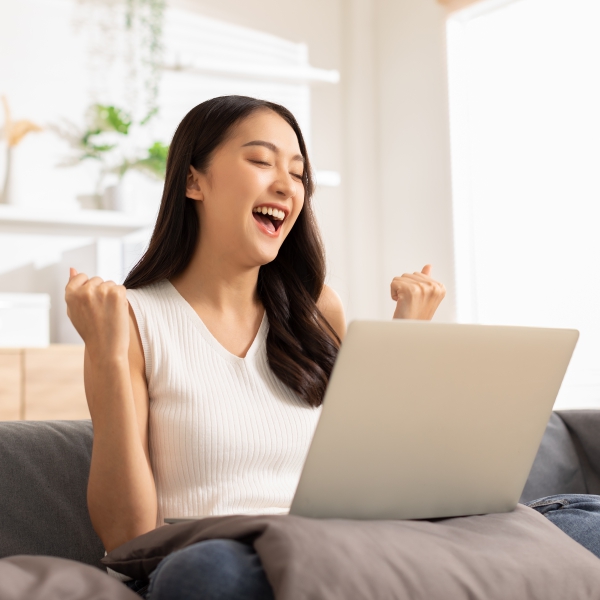Gout Attack
Gout surely has a long history with humankind. Back in 2640 BC, the Egyptians defined a disease with acute inflammation of the big toe as 'Podagra', later the famous Greek physician Hippocrates recognized this disease with the same characteristics and called it 'The Unwalkable Disease', which symptoms are indicated are identical to gout we see today.
In ancient times, Gout was known as “The King's Disease, or “The Arthritis of the Rich” due to the fact that the disease was caused by eating and drinking too much alcohol which was the way of life that only the rich could afford. It was ‘fashionable’ for men of that time to have gout, some even drank up to give themselves this disease.
The word gout comes from the Latin word 'Gutta', meaning drop or 'dripping down' as it was understood that the phlegm drips down and gathers around the joints in the body, causing pain.
What is Gout?
Gout is more common in men than in women. It is caused by the accumulation of uric acid in various joints of the body, especially those that have a low temperature of about 20 degrees Celsius, such as the fingers, ankles, toes, thumbs and feet (Metatarsophalangeal joint). Some patients may have been found to have high uric acid in the blood but do not show symptoms. This is called asymptomatic gout and when an acute gout attack symptom is shown, there will be arthritis, pain, swelling, redness, heat and pain can last 3 to 10 days. If the patient is left untreated and continues to experience pain continuously, it will lead to chronic gout until a knot which is called ‘Tophi’ is formed. Rubbing them can cause damage in our joints.
When the uric acid level in the blood is high, the acid will precipitate around the joints, causing inflammation and generating C3a, C5a, which can induce white blood cells into the inflammatory area. It produces substances like Interleukin-6 and TNF-alpha, causing more and more inflammation, destroying joints, tendons and cartilage.
Gout diagnosis
- Collecting samples of liquid in the joint or collecting tophi to examine uric crystals
- Pain, swelling, redness, heat of the joints is shown
- Measuring the level of uric acid in the blood. (Men greater than 7 mg / dL and women greater than 6 mg / dL)
Medical treatment by a specialist doctor
The medicines used for treatment are divided into two main groups: anti-inflammatory drugs for the joints: non-steroidal anti-inflammatory drugs (NSAIDS), colchicine (colchicine) and severe anti-inflammatory drugs with steroid (Corticosteroid) for short-term treatment and preventive drugs for gout attacks which are drugs that reduce uric acid production such as Allopurinol (Xanthine Oxidase Inhibitors) and Probenecid uric acid excretion drugs, etc.
Causes of Gout
- Obesity. When the body has a higher amount of fat, it usually results in an increased uric acid production, including reduced uric acid elimination by the kidneys.
- The body’s ineffectiveness of removal of uric acid. This is caused by renal impairment or taking certain medications such as diuretics or aspirin.
- Alcoholic beverages. This increases uric acid levels in the blood. The research suggests to limit drinking to 1-2 servings of alcohol per day. An increased risk of gout attacks is raised by 36% and a 51% increase in the likelihood of drinking 2-4 servings per day.
- Eating foods that are high in purines. Food high in purines are offal, seafood, shellfish, fish and certain meats, or simply eating too much meat.
- Drinks containing fructose sugar, such as nectar and fruit juice, can increase blood uric acid levels.
- Existing health conditions. such as diabetes, high blood pressure, kidney disease, thyroid disease, cancer or patients receiving chemotherapy which causes the destruction of cells in the body.
- Stress. The high levels of stress hormones cause inflammation in the body and induce gout.
- Genetic history, such as a family history of gout. This results in an abnormality in the formation and excretion of uric acid. Currently, research has shown that gout can be detected by genetic code such as the genes SLC2A9, ABCG2, FAM35A, etc.
How to reduce uric level in the blood
- Be mindful of your body weight. Make sure that your overall body mass is less than 28% of men and 32% of women.
- Drink at least 2 liters of enough water per day to allow the body to excrete uric acid through the urine.
- Avoid foods that increase uric acid levels, including: all kinds of alcoholic beverages, especially beer any offal, veal, venison, pheasant, turkey, bacon, fish and seafood: sardines, anchovies, mackerel, herring, tuna, salmon, trout, mussels, etc. Also, food and beverages with high fructose sugar, such as nectar, fruit juice, honey.
- Eat low-fat meat in the right amount. Eating too much meat can result in high uric acid levels in the blood
- Eat more fruits and vegetables with less sugar. Research shows that eating vegetables high in purines does not increase the risk of gout and eating more fruits and vegetables can also help reduce inflammatory processes in the body.
References
- Nuki G, Simkin PA. A concise history of gout and hyperuricemia and their treatment. Arthritis research & therapy. 2006;8(1):1-5.
- FitzGerald JD, Dalbeth N, Mikuls T, Brignardello-Petersen R, Guyatt G, Abeles AM, et al. 2020 American College of Rheumatology guideline for the management of gout. Arthritis care & research. 2020;72(6):744-60.
- Choi HK, Atkinson K, Karlson EW, Curhan G. Obesity, weight change, hypertension, diuretic use, and risk of gout in men: the health professionals follow-up study. Archives of internal medicine. 2005;165(7):742-8
- Choi HK, Atkinson K, Karlson EW, Willett W, Curhan G. Purine-rich foods, dairy and protein intake, and the risk of gout in men. New England Journal of Medicine. 2004;350(11):1093-103.
- Neogi T, Chen C, Niu J, Chaisson C, Hunter DJ, Zhang Y. Alcohol quantity and type on risk of recurrent gout attacks: an internet-based case-crossover study. Am J Med. 2014;127(4):311-8.




